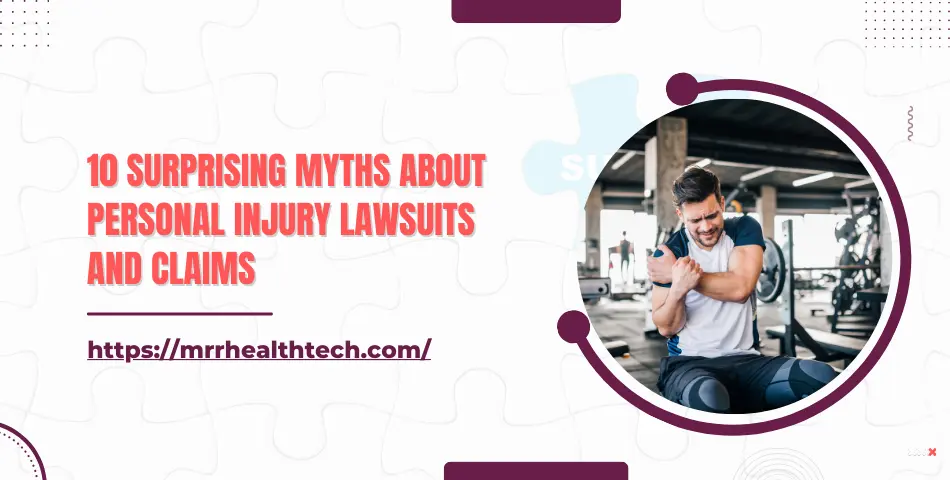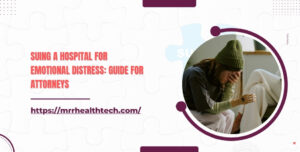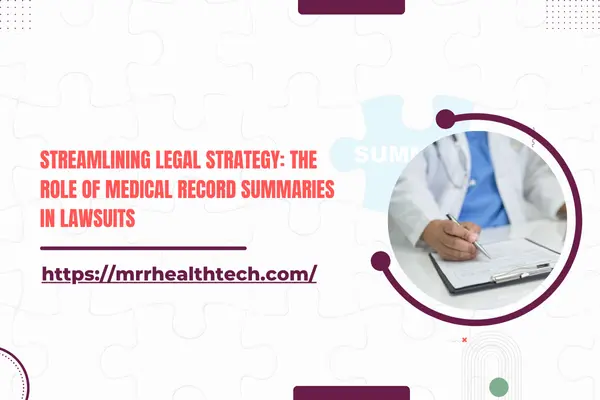
Introduction
Personal injury cases result from various conditions, including auto accidents, slips and falls, workplace injuries, and property damage cases. Despite its obviousness, many myths prevail that appear to rob the victim of getting their right to compensation. The facts need to be identified; whether you are looking for compensation as a plaintiff or are preparing to contest the suit as the defendant.
For an informative discernment on the real and hoax about injury cases and how the myths are dealt with sift through the 11 myths debunked in this article.
Myth 1: Personal Injury Cases Are Frivolous
This is the universe’s influential illustration in this regard. A lot of folks believe that the bulk of personal injury lawsuits are baseless and made to take undue advantage of the legal system. The fact is legible claims demand proof and elements like police gestures, medical report documentation, or eyewitness testimony. Anyone or anything from any case relating to law courts in any region will only get crushed by laws of fabrication.
Genuine claims for victims should be brought before the court on the grounds of negligent torts like negligence, battery, or malicious torts to seek proper compensation for medical bills, disability, and emotional losses.
Myth 2: Only Major Injuries Qualify for Compensation
Many people believe that only catastrophic injuries warrant a personal injury lawsuit. The truth is that even minor injuries can lead to immense business or personal goodwill loss concerning medical expenses and loss of wages. Whether who provides benefits or any form of compensation insurance, workplace injuries, and the very serious matter of an automobile accident are entitled to all types of compensation felt, incurred, and possible in terms of summarily paying for this pain and suffering.
Myth 3: Insurance Companies Offer Fair Settlements Initially
While insurance legalities appear to be providing help, the main goal of an insurance company is to avoid paying more. By giving you settlements that exclude payment for future matters in your injury claim, insurance companies have also made a habit of offering you quick payment. It is highly recommended for victims that they seek advice from a lawyer rather than accept a settlement considering the payment of their debt.
Myth 4: All Personal Injury Cases Go to Trial
People assume that filing a lawsuit means going to court. Most personal injury disputes are settled through negotiation or settlement before hitting the trial stage. There’s another name to this process of initiation and agreement without control: deliberation is long and costly; thus, both plaintiff and defendant benefits would almost certainly come from structures that do not include court discussion.
Myth 5: You Can File a Claim Anytime
Every personal injury claim has its limitations. Every state bears a legal time frame within which the victims must file if they wish to file a court case of a particular legal capacity. By wondering why, they just didn’t sound their attorneys before the claim died, no attorney who wishes to fund an onerous legal gets a piece of these cases bent before being solved.
Myth 6: Partial Fault Bars You from Filing a Lawsuit
There is no more feeling out of the question if you are partially responsible for your accident because, under the comparative negligence law, you can still recover damages if the other person has more blame. The much-reduced reward of fault stops further compensation.
Myth 7: Personal Injury Lawyers Are Only Motivated by Money
Mercenary motives have no part in the barristerial weapons of personal injury truthfully addressed to their client’s interests. Protected interests give way, and foul play arises for many a sore loser out there, thus charging legal services with baseless and cruel scrutiny. The solicitors not only get their commission but have an extraordinary generosity toward putting up a strong case and must ascertain the who’s-who of suits and outrages between a lawyer and a party.
Myth 8: Emotional Distress Claims Are Not Valid
Emotional Distress Damages Are Forbidden requirement for damages, emotional distress, is recognized as a headspring of subsequent ailments that infringe further upon the victim’s health problems: victims of bad accidents often suffer from PTSD, anxiety, and depression, while emotional stress has not been adequately addressed by the court. Courts take damage equally for their emotional distress claims, which can sum up whole variances and psychological injuries to a realization of that loss.
Myth 9: Insurance Companies Have Your Best Interests at Heart
While it is true that insurance policies are meant to cover injuries, their priority is making money. The adjuster will minimize the damage, say they are not serious enough, delay payment, etc. Signing a lawyer reduces such risk and represents an increased likelihood of securing a fair amount of payment.
Myth 10: Personal Injury Claims Always Take Years to Resolve
Many people shy away from considering filing a lawsuit because they think that it will take years to resolve personal injury claims. While some complicated cases may take more than a year or two to settle, most are resolved within a few months to a year through the process of negotiations. Factors for the duration of settlement partly include the evidence, cooperation of the adjustor, and the nature of legal representation.
Conclusion
Personal injury lawsuits are very complex; hence, many myths aggravate injuries of a justifiable nature. To defend yourself and ensure fair compensation, steps include understanding the law, establishing proof of negligence, and getting what is in the elimination of the best legal representation. All these tips can be used to initiate and start furthering legal action in the said case.
Have you encountered a personal injury lawsuit and are confused about the way to go? Refute all myths; you should contact a great personal injury lawyer today to fight for your legal rights and get the compensation you rightly deserve!













